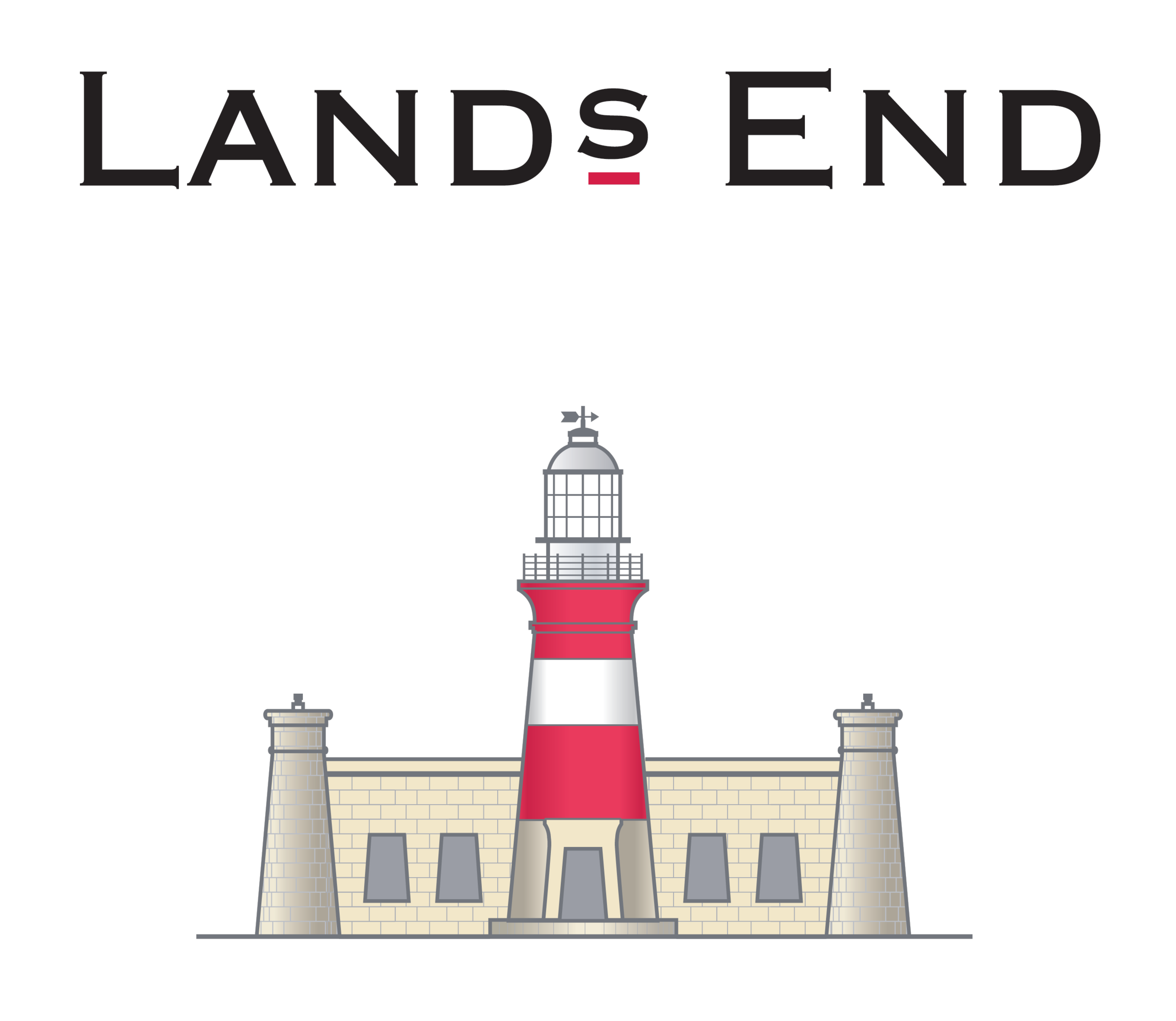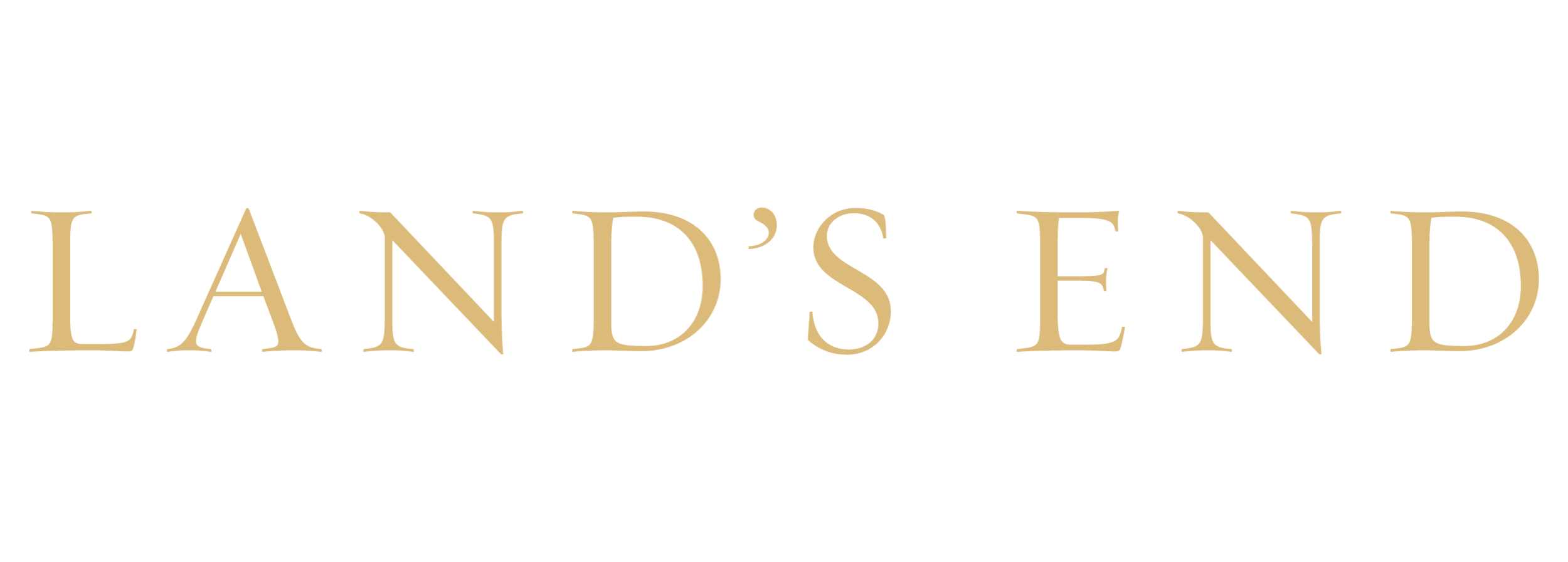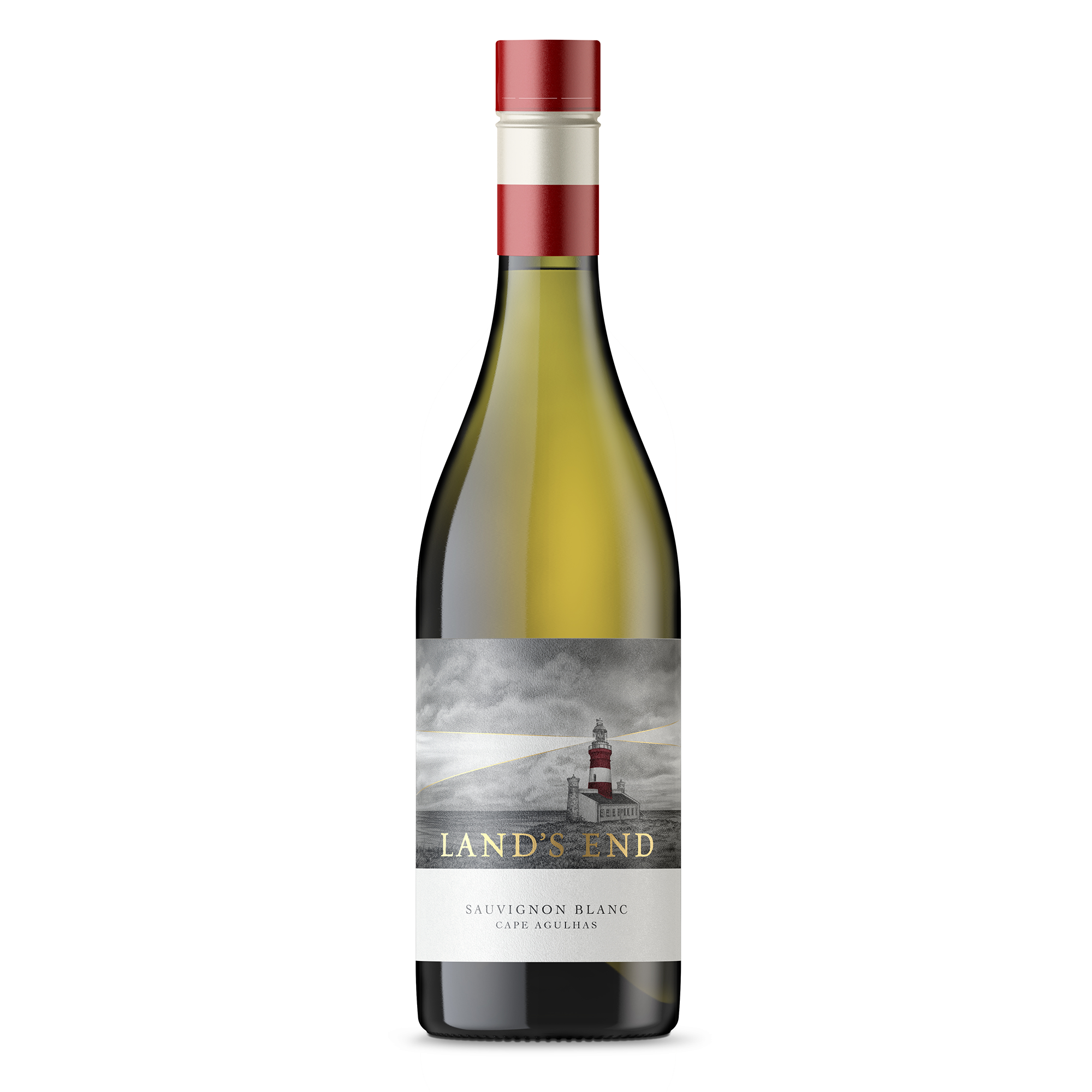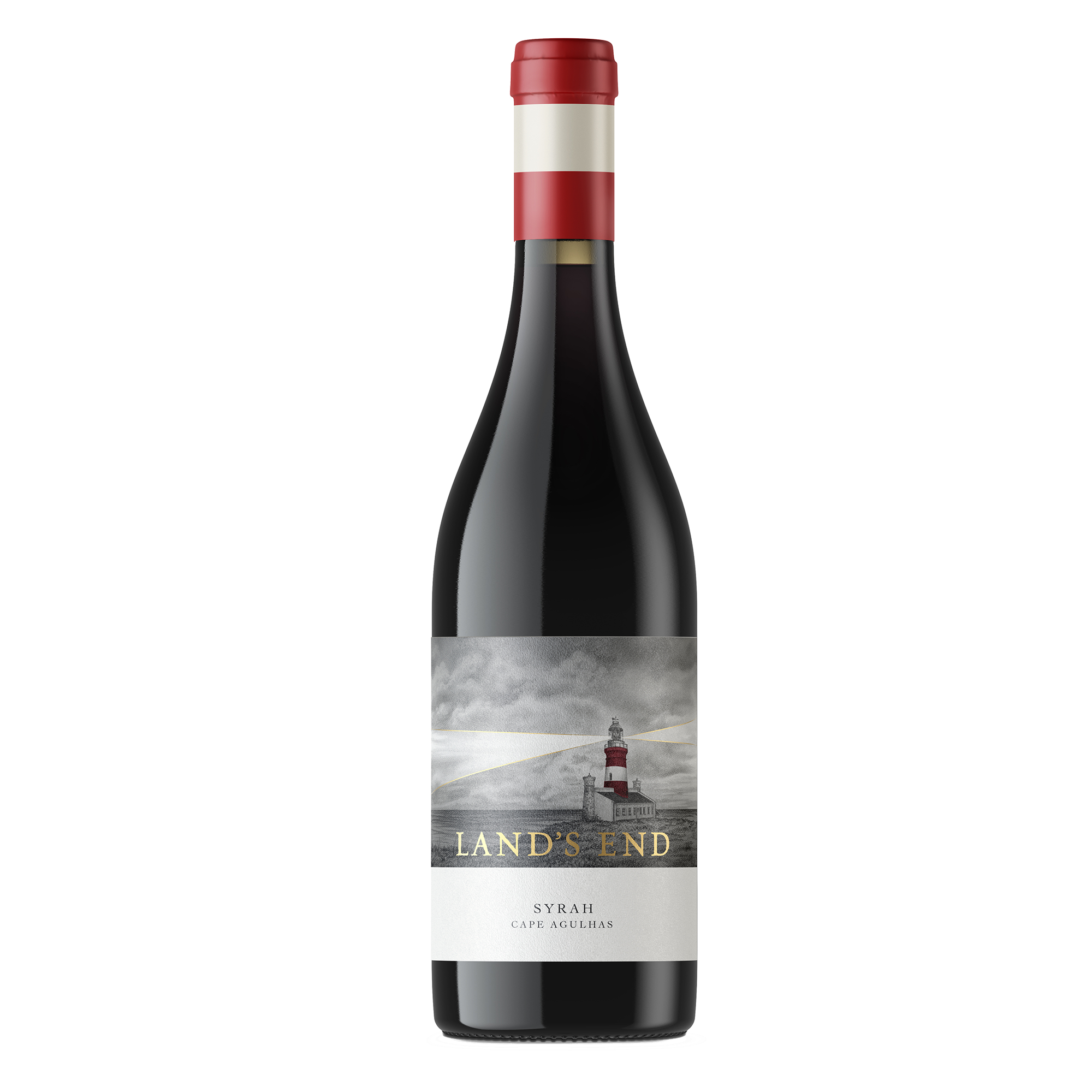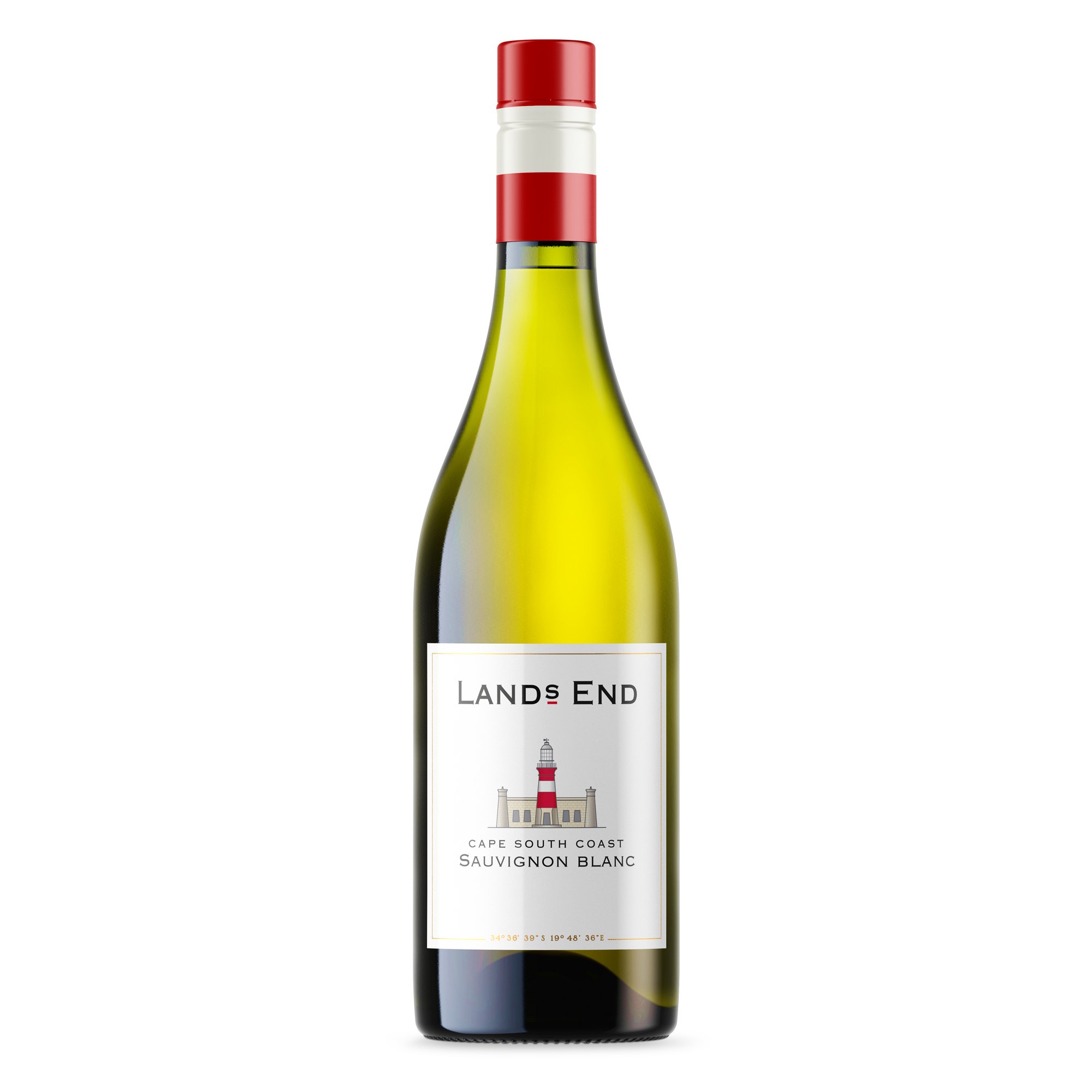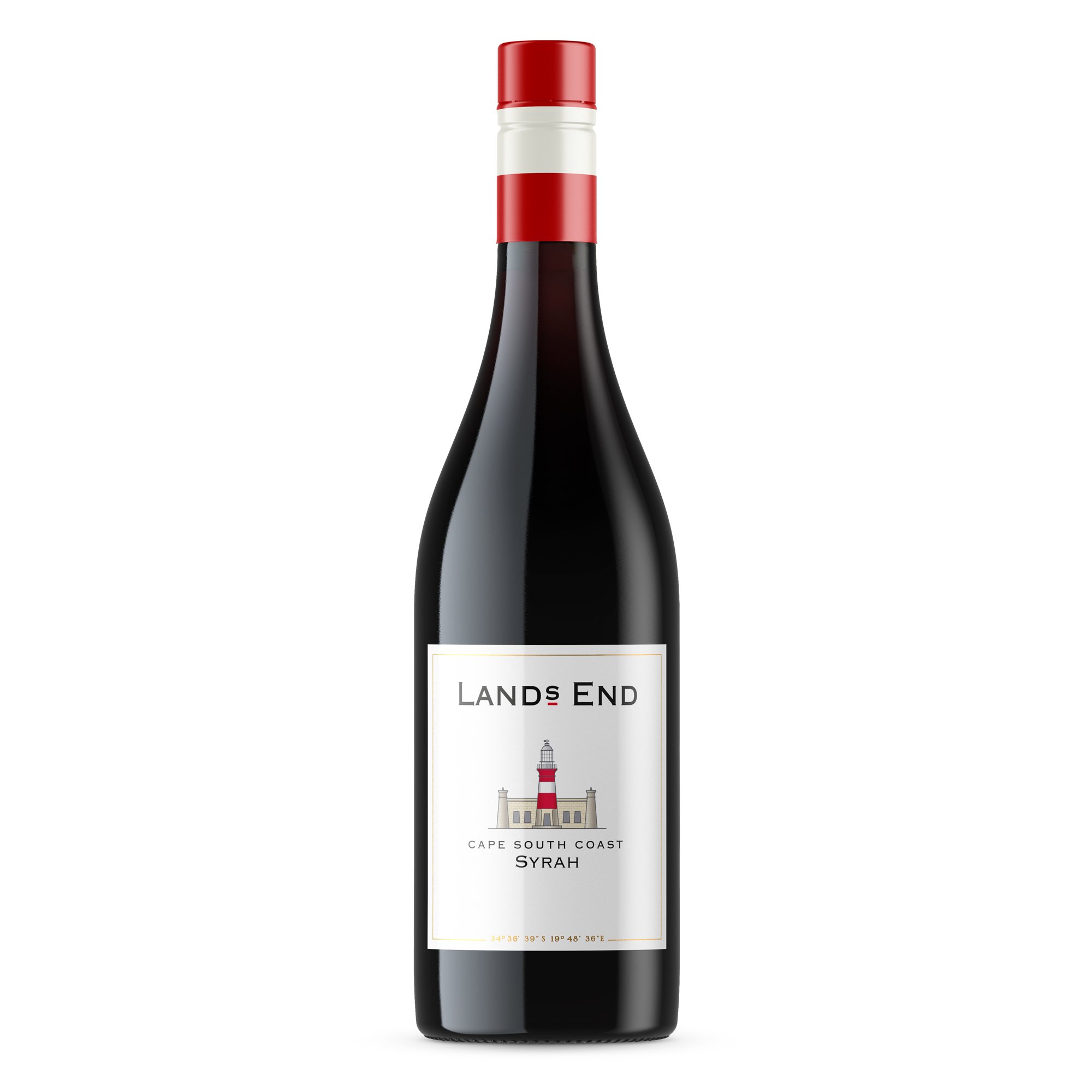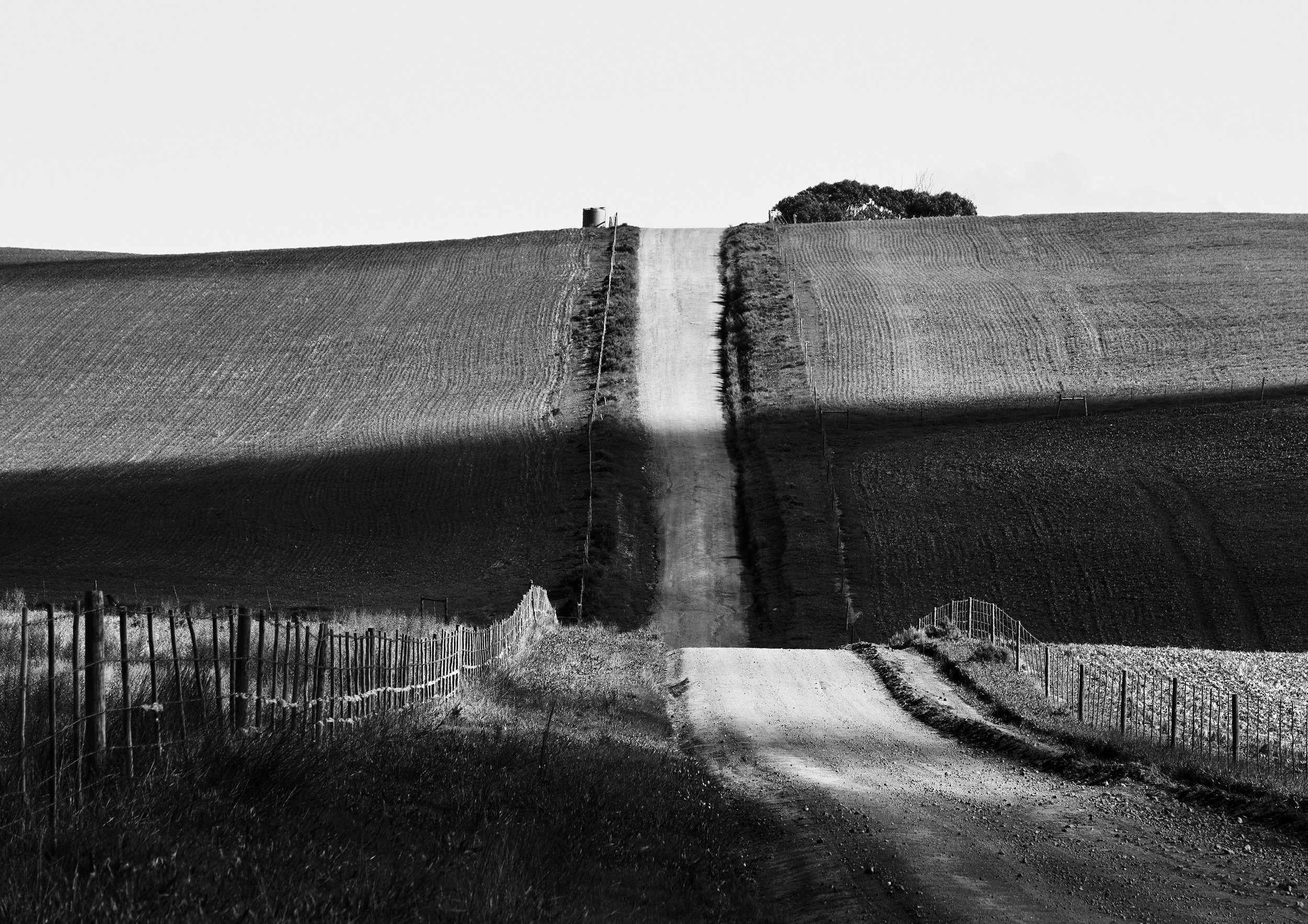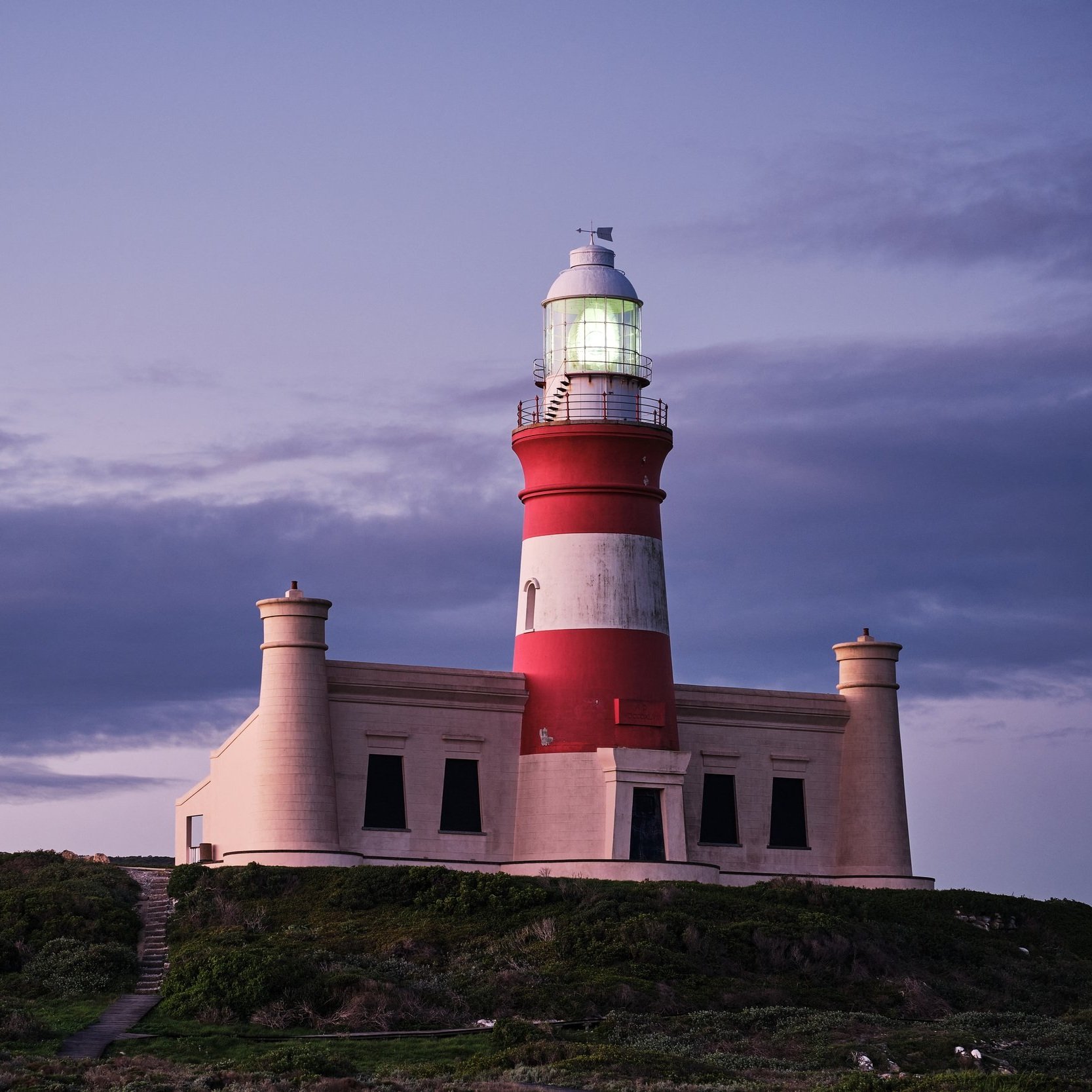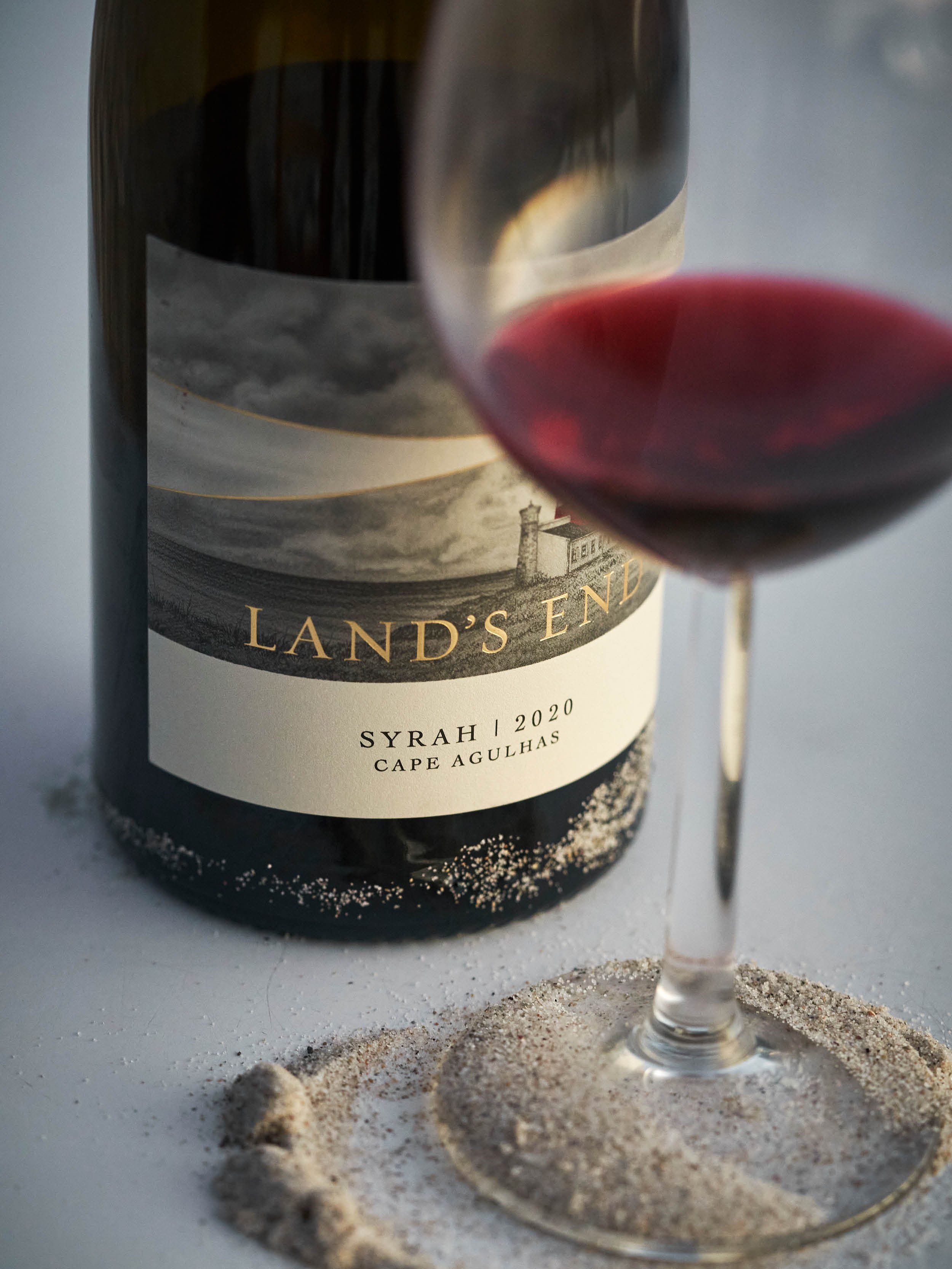salt of the earth
Land’s End Wines, the first of its kind for the area, was established in 1996 by a group of like-minded friends and maverick wine-lovers who long saw the opportunity for Sauvignon grown along this raw, light-filled Cape Agulhas coast.
The wines coming out of the area made waves through the industry for their distinct varietal character, depth of flavour and unmistakable saltiness.
Today, Land’s End is produced by DTK Wines and consists of two tiers; both are bottlings of Sauvignon Blanc and Syrah, one is produced from grapes only sourced in the Elim and Agulhas area, while the other incorporates grapes from across the Cape South Coast, including Agulhas. The two iterations are distinct: low yields of these coastal plains, the long day lengths as well as the moderate temperatures during ripening deliver concentrated and complex wines of a defined mineral essence. The cool maritime climate coupled with the fierce winds imbues a unique sense of place in the wines.
Agulhas wine triangle
The Agulhas Wine Triangle lives by the motto ‘Wine for Explorers’. Pour a glass of Land’s End and see what they mean: the Syrahs are elegant with a coiled, oceanic fynbos note, taking you straight to the edge of wild, coastal cliffs. The Sauvignons with their radiant intensity and seashell flintiness spill across the palate like the electric light just after a storm.
Established in 2019, The Agulhas Wine Triangle showcases the unique terroir of the wines from the Agulhas area. Geographically, members are situated within a triangle with Lomond on the top western corner, Bruce Jack Wines in the top middle, Sijnn and Olivedale Private Vineyards on the top eastern corner, and Black Oystercatcher Wines and Strandveld Wines on the southern corner. The David Nieuwoudt Ghost Corner wines are made from fruit sourced in this area, as are some of the wines in the Trizanne Signature Wines range.
storm-born wines from the tip of Africa
by Malu Lambert
For over 150 years the Cape Agulhas Lighthouse has stood silent sentry at land’s end. Along this rocky coast of the great African continent, a liminal space between habitable land and two giant ocean masses, storm-born tragedies have played out for centuries. This marginal place was once called Cabo dos Agulhas by Portuguese explorers, the ‘Cape of Needles’ a moniker from the savage reefs their ships were impaled upon. Over 120 shipwrecks sink ever deeper into the seabed as time marches on with the swirling currents.
From this cool maritime climate, Du Toitskloof sources grapes for their range of Land’s End Wines, authentic expressions of a land untamed. This southernmost place is exposed, alchemic. And it’s not just storms. Compasses fail here too; the needles not able to distinguish between true north and magnetic north.
There’s an ordinary kind of magic too. White horses in the waves perpetually charge against the wild coastline. Governed by the laws of the Roaring Forties, an old sailor name for the latitudinal winds that whip up from the circumference of the earth, with nothing in the way of its ferocity other than the southernmost tip of Africa.
Recorded in the wind
Built in 1848 the Lighthouse’s beacon has been constant in the ensuing decades, sluicing through the iron sea. Its candy-striped façade has seen Moravian missionaries make wines for Holy Communion, their heads bowed in prayer. Fisherman cottages sprung up, plastered in lime and seashells. Elim became a village at the edge of the world.
Along with fishing, agriculture slowly took root – sheep, grain. Hardy crops and animals that could hold their ground against ocean gales. Generations passed. Governments rose and fell. The Nationalist regime officially collapsed in 1994, and with it the monoculture that characterised wine growing in South Africa. The wine industry was given new life by pioneering wine farmers, who now free of the stringent rules that had shaped viticulture insofar, could strike out and create new regions, better suited to specific varieties.
The vanguard and a coming of age
Chardonnay and Pinot were planted in the well-suited cool regions of Elgin and the Hemel-en-Aarde. And like a siren’s call Sauvignon Blanc and Syrah spread to the outlying, wind-ravaged Elim. Land’s End Wines, the first of its kind for the area, was established in 1996. Its progenitors were Charles Hopkins, viticulturist Johan Wiese, an accountant Pieter Ferreira and Hein Koegelenberg. A group of like-minded friends and maverick wine-lovers who long saw the opportunity for Sauvignon grown along this raw, light-filled coast.
They were right. The wines coming out of the area made waves through the industry for their distinct varietal character, depth of flavour and unmistakable saltiness.
In 2016, 20 years after the brand was first established another group of friends gathered around a flickering fire, the night-sky cold and expansive above. The icy temperatures kept at bay by glasses of local wine, the warmth of well-worn friendships and the kind of braai that burns long into the night.
Wine-farmer Francois Botha from the Breedekloof area was visiting Agulhas friends, among them confidante Dirk Human of the Black Oystercatcher. As the flames climbed higher Human told Botha about Land’s End Wines, and how it was on the market for acquisition. Botha jumped at the idea. Growing up in the nearby fishing village of Arniston he knew the landscape intimately, not to mention the region’s wines he regularly enjoyed with friends.
He called up winemaker Du Toitskloof Shawn Thomson and said: ‘We’ve got to go for it’. For Thomson, it was also a no-brainer. “I have a real connection with Agulhas,” he shared. “Our family had a holiday home there with no electricity, and the house was so close to the sea that when the waves broke, they splashed against the windows. I’ve spent a lot of time trawling that coast, it’s in my blood.”
With the winemaker in-hand, Botha assumed the position of chairman and appointed Leon Dippenaar as viticulturist for the project.
Dippenaar is also drawn to the area. “The authenticity of the area is striking to me. I always look forward to going there and connecting with the farmers, they embody the expression ‘salt of the earth’. You’re not going there to buy grapes from a guy in a suit and tie. You realise once you’re there, you can’t do anything about climate, you just accept it, and this relates to the people too, they’re as a part of the landscape as anything else.”
At land’s end the Lighthouse meets the storm, an enduring battle captured, and bottled.


